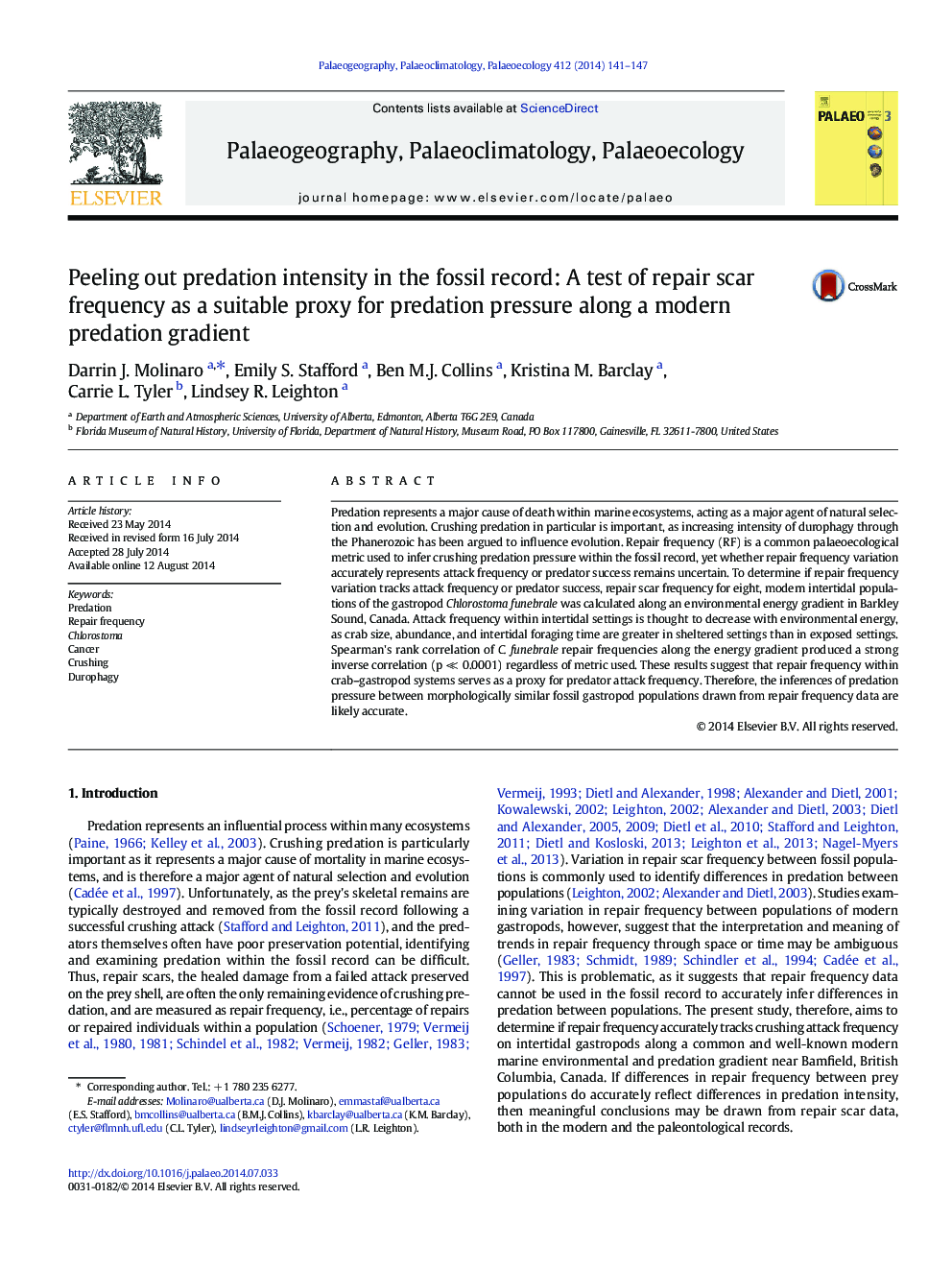| Article ID | Journal | Published Year | Pages | File Type |
|---|---|---|---|---|
| 4466194 | Palaeogeography, Palaeoclimatology, Palaeoecology | 2014 | 7 Pages |
•Repair scar frequency (RF) is a commonly used palaeoecological metric.•RF comparisons between fossil populations have been argued to be uninformative.•We examined gastropod RF variation across a known environmental predation gradient.•We found RF tracks predation frequency, not predator success rate or shell size.•Gastropod RF is a useful metric in measuring predation within fossil assemblages.
Predation represents a major cause of death within marine ecosystems, acting as a major agent of natural selection and evolution. Crushing predation in particular is important, as increasing intensity of durophagy through the Phanerozoic has been argued to influence evolution. Repair frequency (RF) is a common palaeoecological metric used to infer crushing predation pressure within the fossil record, yet whether repair frequency variation accurately represents attack frequency or predator success remains uncertain. To determine if repair frequency variation tracks attack frequency or predator success, repair scar frequency for eight, modern intertidal populations of the gastropod Chlorostoma funebrale was calculated along an environmental energy gradient in Barkley Sound, Canada. Attack frequency within intertidal settings is thought to decrease with environmental energy, as crab size, abundance, and intertidal foraging time are greater in sheltered settings than in exposed settings. Spearman's rank correlation of C. funebrale repair frequencies along the energy gradient produced a strong inverse correlation (p ≪ 0.0001) regardless of metric used. These results suggest that repair frequency within crab–gastropod systems serves as a proxy for predator attack frequency. Therefore, the inferences of predation pressure between morphologically similar fossil gastropod populations drawn from repair frequency data are likely accurate.
